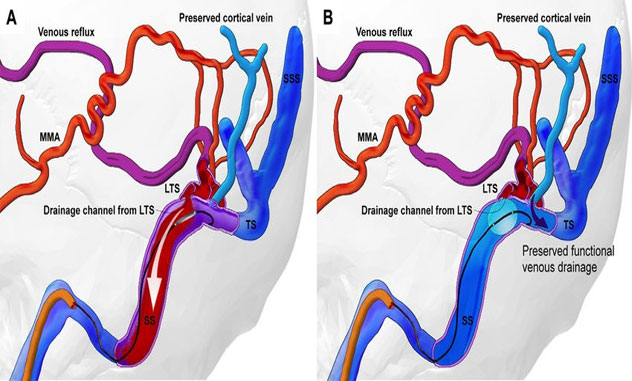
Dural Fistula Embolization
In dural AV fistula embolization , the arteries in the brain are connected abnormally to veins not by normal capillaries but by arteriovenous fistulas. These fistulas can empty the arteries of blood before cerebral circulation is completed.
Abnormal emptying of blood between arteries and veins can cause headaches, hemorrhage, seizures, and strokes. They may also cause neurological symptoms impacting memory, movement, vision or speech. Glue can be used to block blood flow to the affected area or to fill the fistula to prevent ruptures.
Why is this procedure done?
Embolization is a general term for closing off or occluding a vessel. A dural arteriovenous fistula (dAVF) is an abnormal connection, or short circuit, in the covering of the brain or spinal cord. The reason these cause problems is that the blood drainage of the brain and spinal cord connects to the veins of the dura. The dAVF or short circuit results in too much pressure in the veins of the brain and can result in bleeding in the brain or in the fluid around the brain—a condition which can result in stroke and death. This procedure is performed to plug the abnormal connection, restoring normal circulating and receiving the dangerous increased pressure in the veins or the brain or spinal cord.
General discharge instructions.
What should I expect while recovering?
Some pain at the site of puncture is common; this usually eases after 2 – 3 days, but may persist for up to a month. Some patients will have some soreness at the site of embolization for a few days. This is normal and typically responds to over-the-counter pain medications. Some patients report feeling a little more tired than usual for the first few weeks after the procedure. This is normal and tends to wax and wane, but overall gets better over the course of a few weeks.
